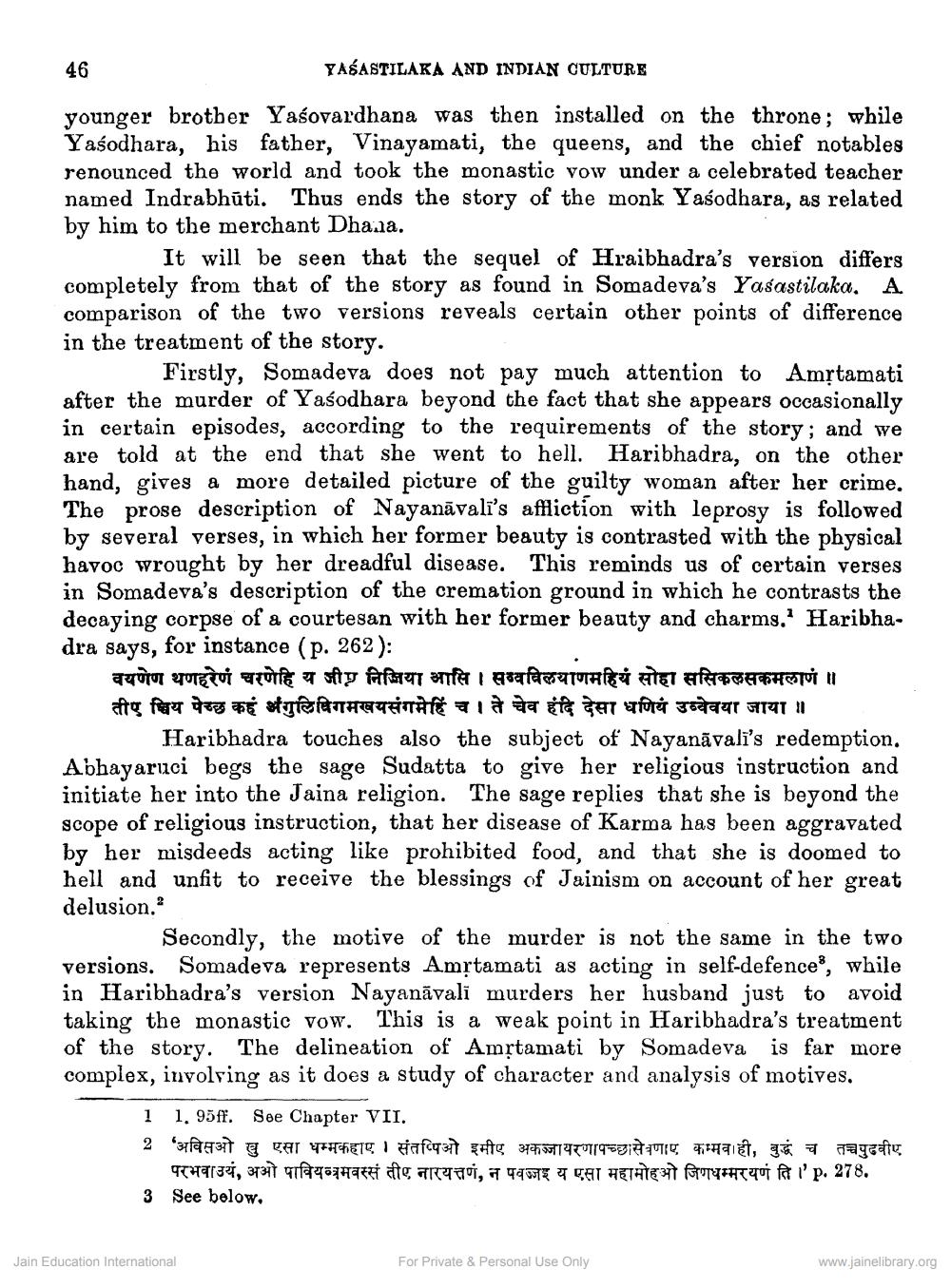________________
46
YASASTILAKA AND INDIAN CULTURE
younger brother Yašovardhana was then installed on the throne; while Yasodhara, his father, Vinayamati, the queens, and the chief notables renounced the world and took the monastic vow under a celebrated teacher named Indrabhūti. Thus ends the story of the monk Yasodhara, as related by him to the merchant Dhana.
It will be seen that the sequel of Hraibhadra's version differs completely from that of the story as found in Somadeva's Yasastilaka, A comparison of the two versions reveals certain other points of difference in the treatment of the story.
Firstly, Somadeva does not pay much attention to Amrtamati after the murder of Yaśodhara beyond the fact that she appears occasionally in certain episodes, according to the requirements of the story; and we are told at the end that she went to hell. Haribhadra, on the other hand, gives a more detailed picture of the guilty woman after her crime. The prose description of Nayanāvali's affliction with leprosy is followed by several verses, in which her former beauty is contrasted with the physical havoc wrought by her dreadful disease. This reminds us of certain verses in Somadeva's description of the cremation ground in which he contrasts the decaying corpse of a courtesan with her former beauty and charms.' Haribhadra says, for instance (p. 262):
वयणेण थणहरेणं चरणेहि य जीए निजिया आसि । सम्वविलयाणमहियं सोहा ससिकलसकमलाणं॥ तीए चिय पेच्छ कहं अंगुलिविगमखयसंगमेहिं च । ते चेव हंदि देसा धणिय उव्वेवया जाया ॥
Haribhadra touches also the subject of Nayanāvali's redemption. Abhayaruci begs the sage Sudatta to give her religious instruction and initiate her into the Jaina religion. The sage replies that she is beyond the scope of religious instruction, that her disease of Karma has been aggravated by her misdeeds acting like prohibited food, and that she is doomed to hell and unfit to receive the blessings of Jainism on account of her great delusion.”
Secondly, the motive of the murder is not the same in the two versions. Somadeva represents Amộtamati as acting in self-defences, while in Haribhadra's version Nayanāvali murders her husband just to avoid taking the monastic vow. This is a weak point in Haribhadra's treatment of the story. The delineation of Amrtamati by Somadeva is far more complex, involving as it does a study of character and analysis of motives.
1 1.95ff. See Chapter VII. 2 'अविसओ खु एसा धम्मकहाए । संतप्पिओ इमीए अकज्जायरणापच्छासेवणाए, कम्मवाही, बुद्धं च तच्चपुढवीए
परभवाउयं, अओ पावियन्नमवस्सं तीए नारयत्तणं, न पवज्जइ य एसा महामोहओ जिणधम्मरयणं ति।' p. 278. 3 See below.
Jain Education International
For Private & Personal Use Only
www.jainelibrary.org




